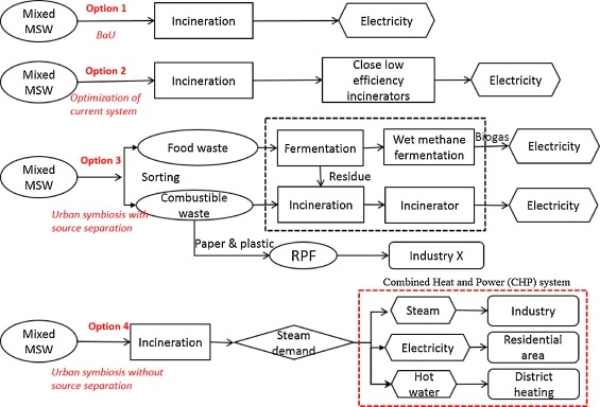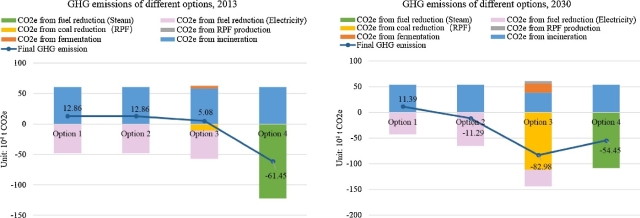Information of Paper
Authors:Sun L., Fujii M., Tasaki T., Dong H., Ohnishi S
Year:2018
Journal:Resources, Conservation and Recycling, 139, PP 289-296
Link to the paper
Keywords
waste management, waste recycling, carbon footprint, hybrid LCA
Abstract
As a means of converting waste to energy, improvement of energy recovery efficiency from municipal solid waste (MSW) has taken on great importance and necessity. Previous studies have focused on the waste-to-energy potential from the viewpoints of technology, such as waste power generation (WPG); however, there is large room for improvement in WPG efficiency. Moreover, with reduction in population in some developed countries, the potential for further improvement of energy recovery from waste needs to be investigated, considering both geographical characteristics and future trends. To fill this research gap, this study proposes four efficient MSW management options through integrating MSW management and an urban symbiosis network. The Tokyo Metropolis, Japan, was selected as a case study, and the costs and benefits, effects of greenhouse gas (GHG) emission reduction, and energy recovery efficiency of each option were quantitatively analyzed. The results showed that Option 4 (urban symbiosis without source separation) has the highest energy recovery efficiency (65.95%), followed by Option 3 (urban symbiosis with source separation) and Option 2 (MSW centralized treatment) in 2030. Compared with Option 1 (business as usual), Option 3 will slightly increase the total cost, while Option 4 is the most profitable option, and the benefit will rise to 1.81 × 1010 JPY in 2030. Reduction of greenhouse gas (GHG) emissions by 2030 will be greatest with Option 3, which will eliminate 9.44 × 105 tonnes of CO2e emissions. Also by 2030, Option 4 and Option 2 will reduce the CO2e emissions by 6.58 × 105 tonnes and 2.27 × 105 tonnes, respectively. To promote the transition to a low carbon city, Tokyo must improve the energy recovery efficiency of MSW and use more renewable and recycled energy resources to substitute for fossil fuels. This study provides a practical guide for establishing a more efficient MSW management system toward the goal of a low carbon society.






